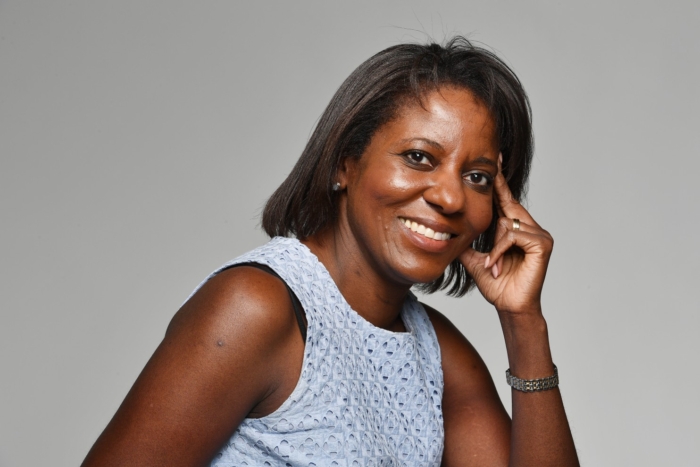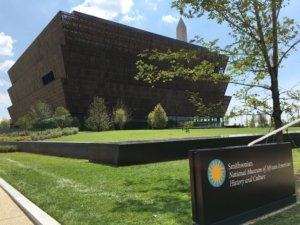
On September 24, the Smithsonian Institution’s National Museum of African American History and Culture (NMAAHC) opened to the public with a ceremony officiated by President Barack Obama. Congress established the museum in 2003, and its site, on the National Mall in Washington, D.C., was selected in 2006. Over the past decade, the building was designed and constructed, more than 30,000 objects were amassed for the still-growing permanent collection, and key curators and staff were selected to lead the fledgling institution, including Scripps alumna Dwandalyn Reece ’85, NMAAHC curator of music and performing arts.
Reece describes the NMAAHC’s opening as “a momentous occasion.”
“I’m humbled to be a part of it. There has been a need and a desire to represent the whole story of the African American experience and to contribute my voice to that makes me feel like I am part of a larger community.” 
As part of the opening spate of exhibitions and programs, Reece co-curated Freedom Sounds: A Community Celebration, a celebration of the social power of African American music, especially songs of solidarity and protest. Examining the richness and variety of music from the African American diaspora, the festival extends Reece’s research interests as a curator. Her work includes collecting objects, conceptualizing exhibitions, and public programming around music, dance, theater, and performance.
At Scripps, Reece majored in American studies and music. She recalls taking a class with Professors of Music Alice Shapiro and Jane O’Donnell, titled Music: Mirror of Society, that looked at social influences on classical composers, which got her interested in looking at American music through the same lens.
“Scripps was instrumental to my worldview, how I approach my work, and what I’ve accomplished,” Reece praised. “I think we all deserve to understand as much as we can. We should all have the ability to learn, to challenge ourselves, and to think critically, and that’s what I’ve spent my life doing.”
Reece also worked at the career center through work-study while she was a student, but she admits that she had no idea what she wanted to do in for her own profession. She came across an article about the Smithsonian Institution in a magazine and thought it might be interesting to work there. This led her to pursue jobs with several museums and grant-making organizations, including the National Endowment for the Humanities, the Louis Armstrong House and Archives, the Brooklyn Historical Society, and the Motown Historical Museum, until she landed at the NMAAHC, where she has worked since 2009. Reece also went on to earn her master’s degree in American culture and a certificate in museum practice from the University of Michigan and her PhD in performance studies from New York University.
Musical Crossroads, one of the NMAAHC’s 12 inaugural exhibitions and curated by Reece, “tells the story of African American music from the arrival of the first Africans to the present. Musical Crossroads covers a range of music styles, including classical, country, jazz, sacred, rock, and hip-hop. In conceiving the exhibition, Reece identified foundational themes and concepts in the history of African American music and chose objects from the collection to tell their stories. Items on display include an outfit associated with Marian Anderson’s 1939 concert at the Lincoln Memorial, Louis Armstrong’s trumpet, the Parliament Funkadelic Mothership, and Questlove’s handwritten studio notes for the album, Things Fall Apart by The Roots.
Reece’s work at the Smithsonian is the culmination of a career focused on making the humanities accessible in everyday life. “At Scripps I experienced music as a creative endeavor but I also learned that the arts were essential to understanding who we are, where we’ve been and how we interpret the world around us. Music is a universal language of human creativity, expression and communication. It is multidimensional in its impact and influence, and continues to define how we experience our lives and learn from each other despite the invisible borders that divide us.”

